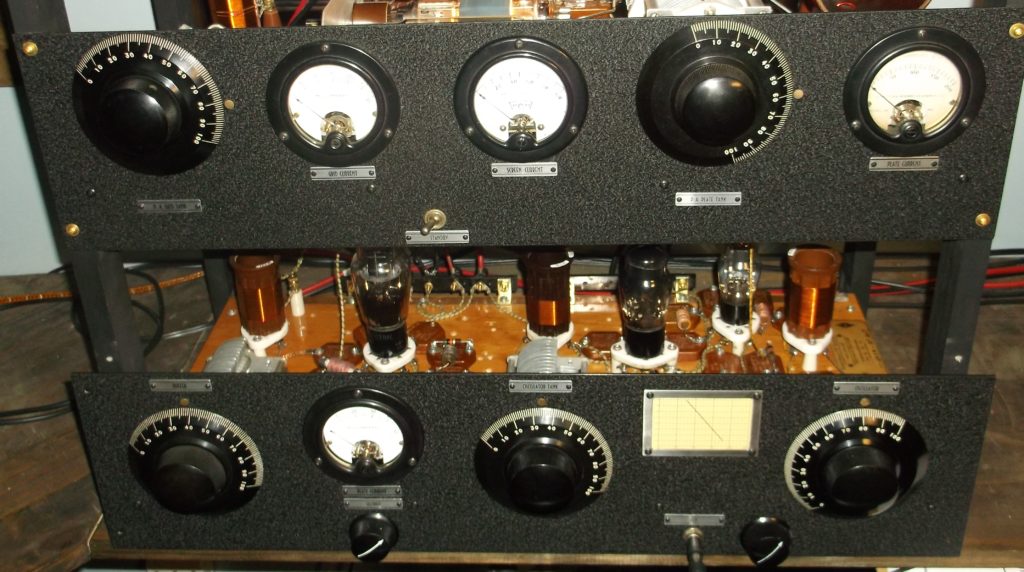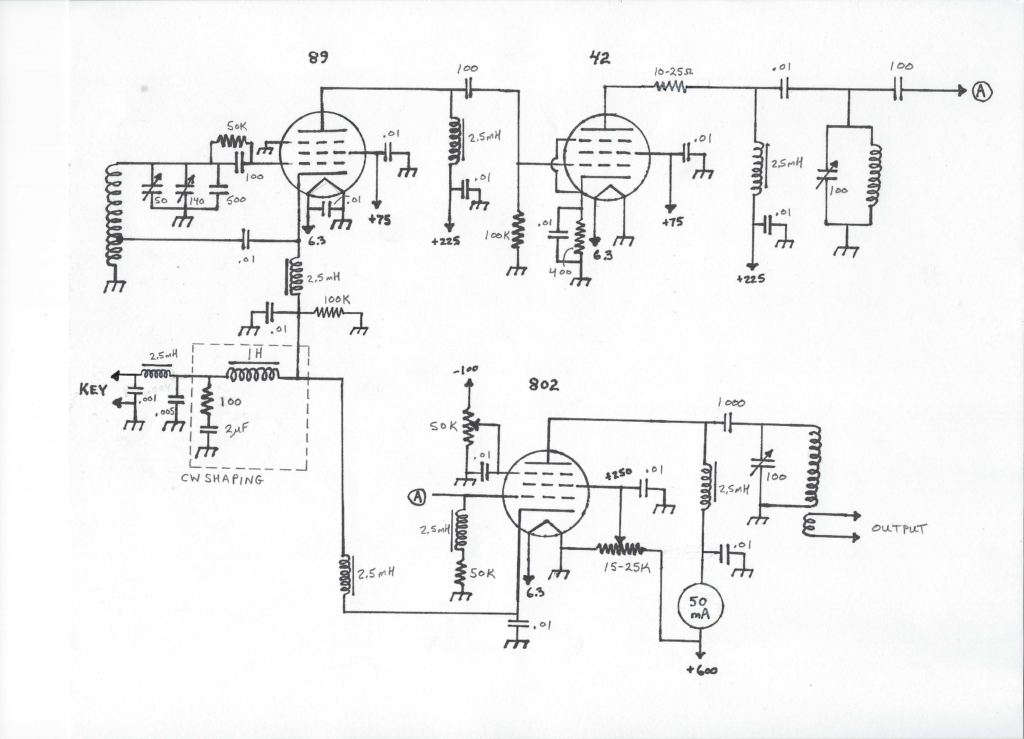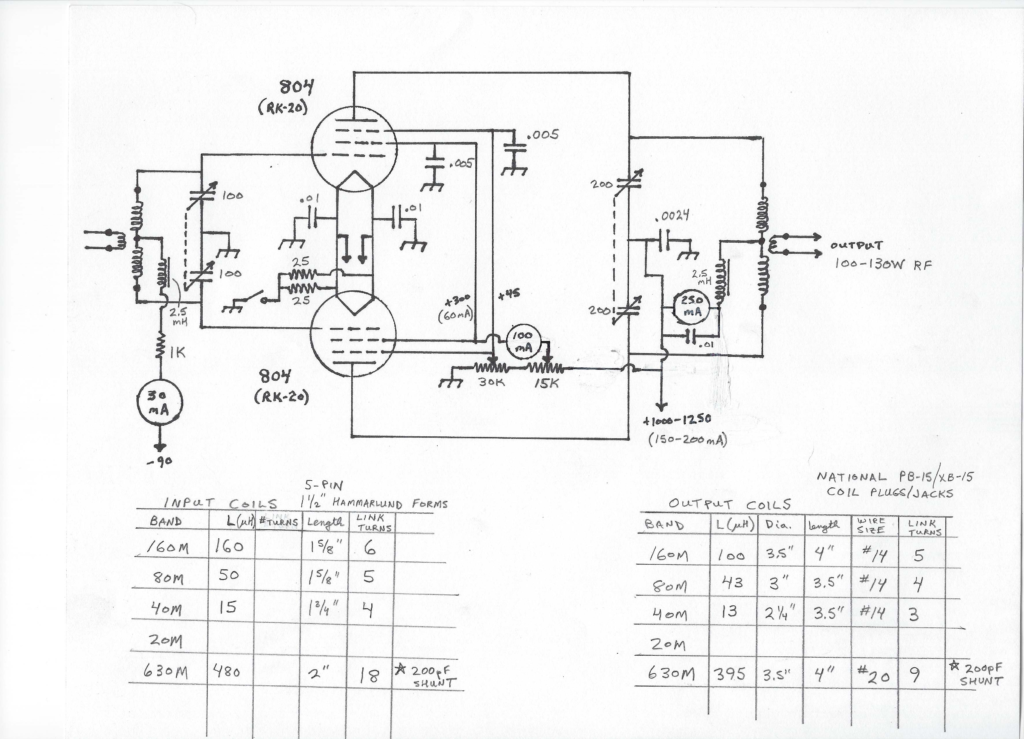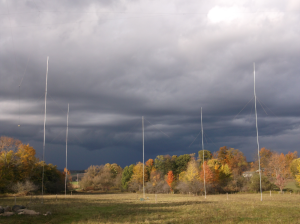 This year’s Field Day transmitter employed a 59-59 (ECO/Buffer) exciter and Push-Pull 804 amplifier. While it worked relatively well for the circuit in use, I wanted to get better performance out of the exciter. Tuning was very critical at each stage due to insufficient isolation (incomplete screening in the 59s), causing chirp and in some cases a raspy note when optimal settings were not used. A particular “good” setting of the tank tuning at each stage was also only good for 10-15 kc before re-tuning was needed to clean up the signal again.
This year’s Field Day transmitter employed a 59-59 (ECO/Buffer) exciter and Push-Pull 804 amplifier. While it worked relatively well for the circuit in use, I wanted to get better performance out of the exciter. Tuning was very critical at each stage due to insufficient isolation (incomplete screening in the 59s), causing chirp and in some cases a raspy note when optimal settings were not used. A particular “good” setting of the tank tuning at each stage was also only good for 10-15 kc before re-tuning was needed to clean up the signal again.
After much research, I started experimenting with a 6AG7 – 6F6 – 802 exciter. The 6AG7 ECO was choke coupled to the 6F6 which was biased for Class A operation. The tuning of stages after the oscillator barely had any effect on the frequency and no effect on the CW note characteristics, with the most reaction coming from the tuning of the 6F6 plate tank, amounting to about a few dozens of Hz shift around resonance. This was a major improvement over any previous exciter I’ve built.
It would have probably been well and good to just use the 6AG7-6F6-802 lineup, but I wanted to maintain a bit older provenance. I tested a 6F6G (glass) and found no difference in operation from a 6F6 metal, confirming there was no ill feedback from the push-pull final amplifier above it (shielded, but ya never know…). The logical transition to an older tube from the 6F6G was a 42, which is the same tube, albeit released earlier (1932), as a 6F6 except for a different base (6-pin vs. octal). Next, I contemplated what earlier tubes could replace the 6AG7, which is an excellent ECO tube and really has no comparable predecessor. The closest tube I could come up with that had a separate pin for the suppressor (not tied to the cathode) and a 6.3VAC filament was the 89.
After swapping out the 6AG7 and 6F6 with an 89 and 42, I was happy to find that the performance was still excellent. This will make operation much more pleasant while still maintaining the mid-30s “vintage” of the rig itself. The only late-30s concession made was to add a pair of gaseous regulators (VR-75, VR-150) to the exciter power supply to provide 75V to the screens and 225V to the plates of the 89 and 42.
There is no observable chirp (tested up to 40M), the note is pure, and CW shaping is good with the use of a shaping circuit on the keying line (seen in exciter schematic). Below is an on-air audio sample and some CW waveform captures, exhibiting nice leading and trailing edges that should minimize any clicks.
Exciter Schematic (89, 42, 802) – click to enlarge
Amplifier Schematic (Push Pull 804s) – click to enlarge



